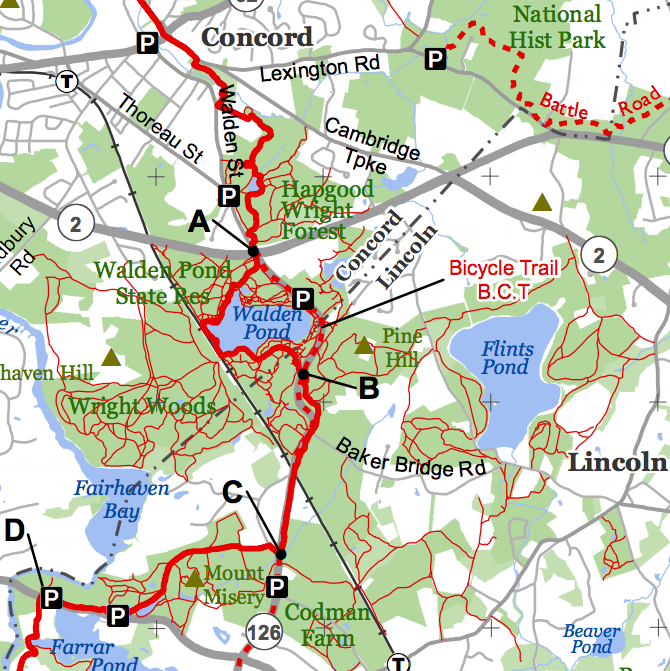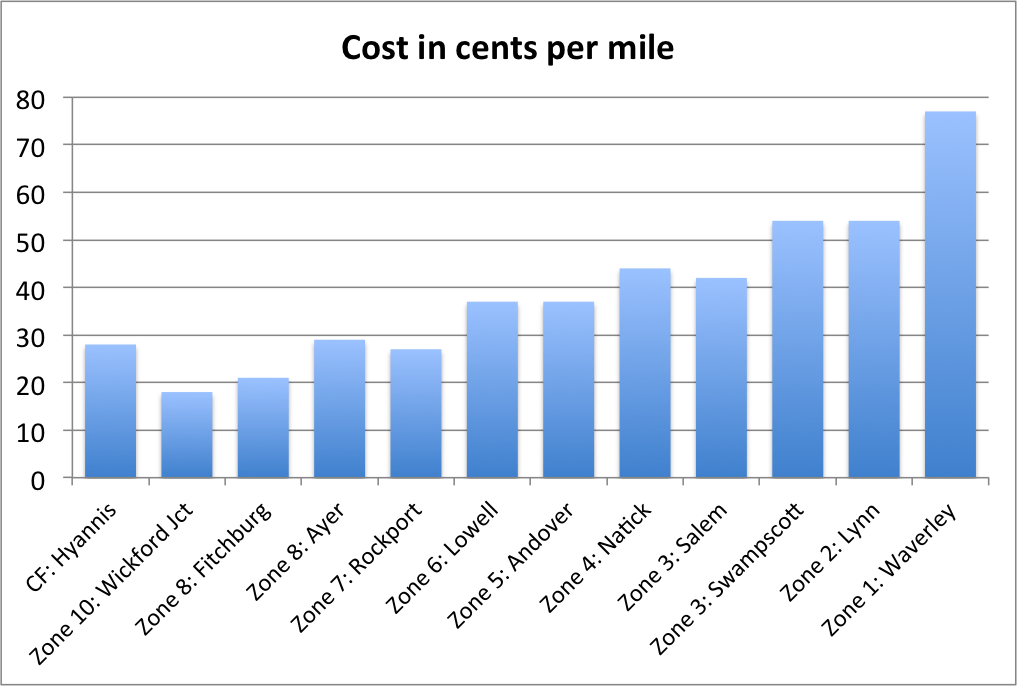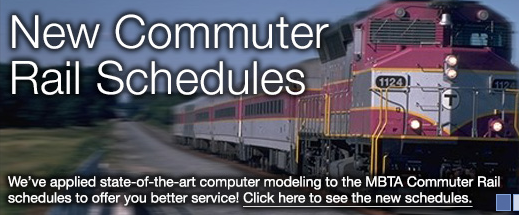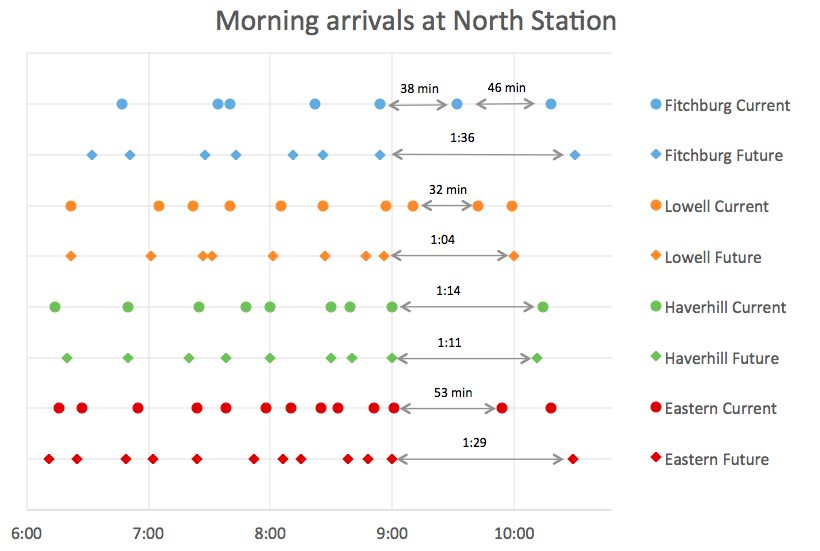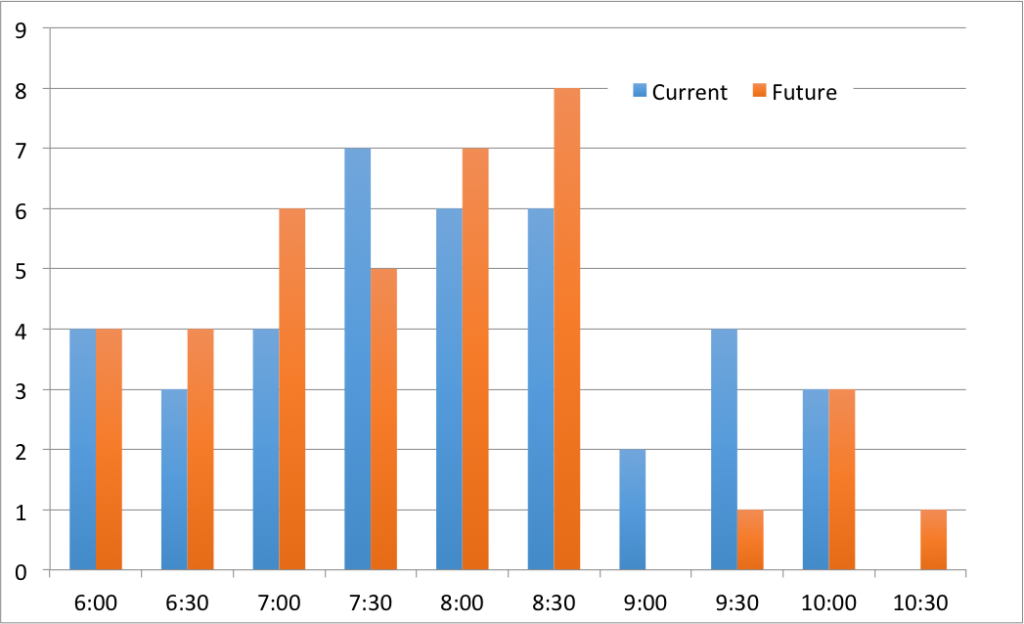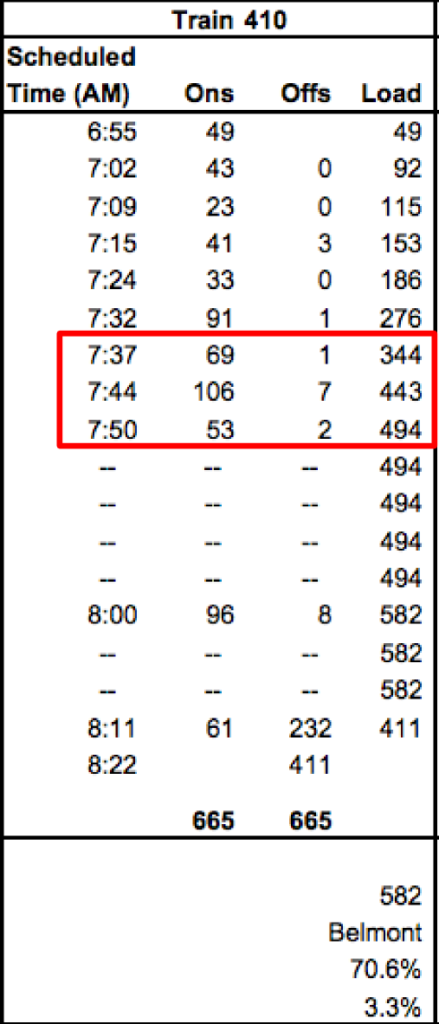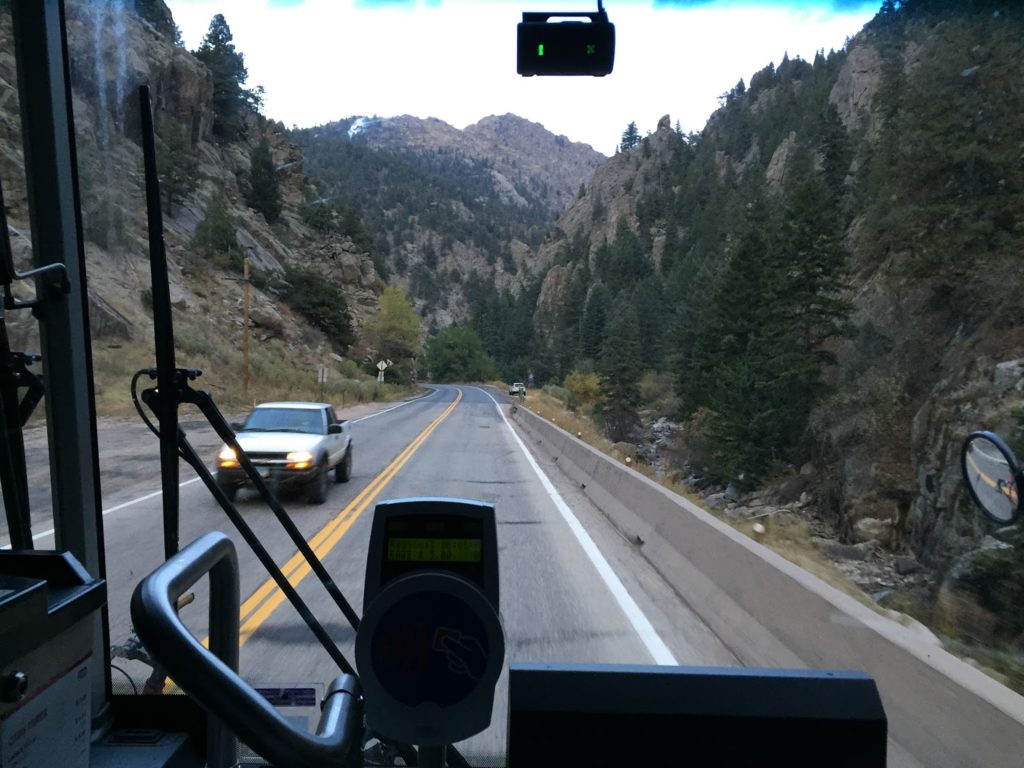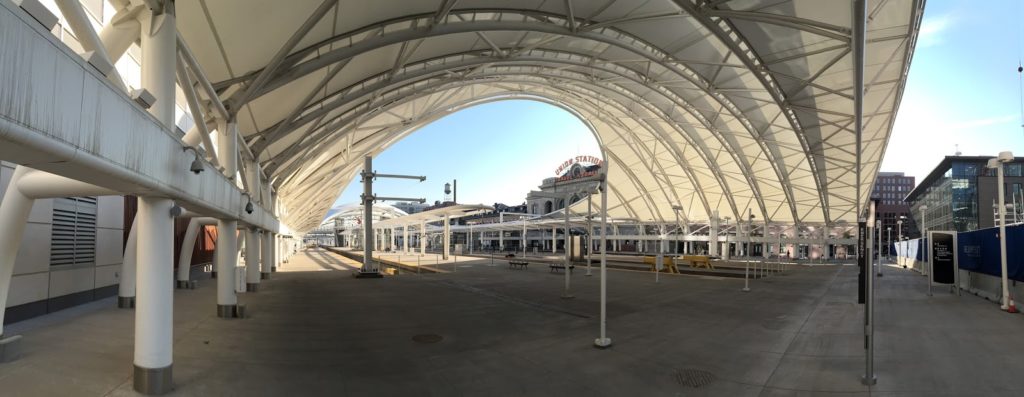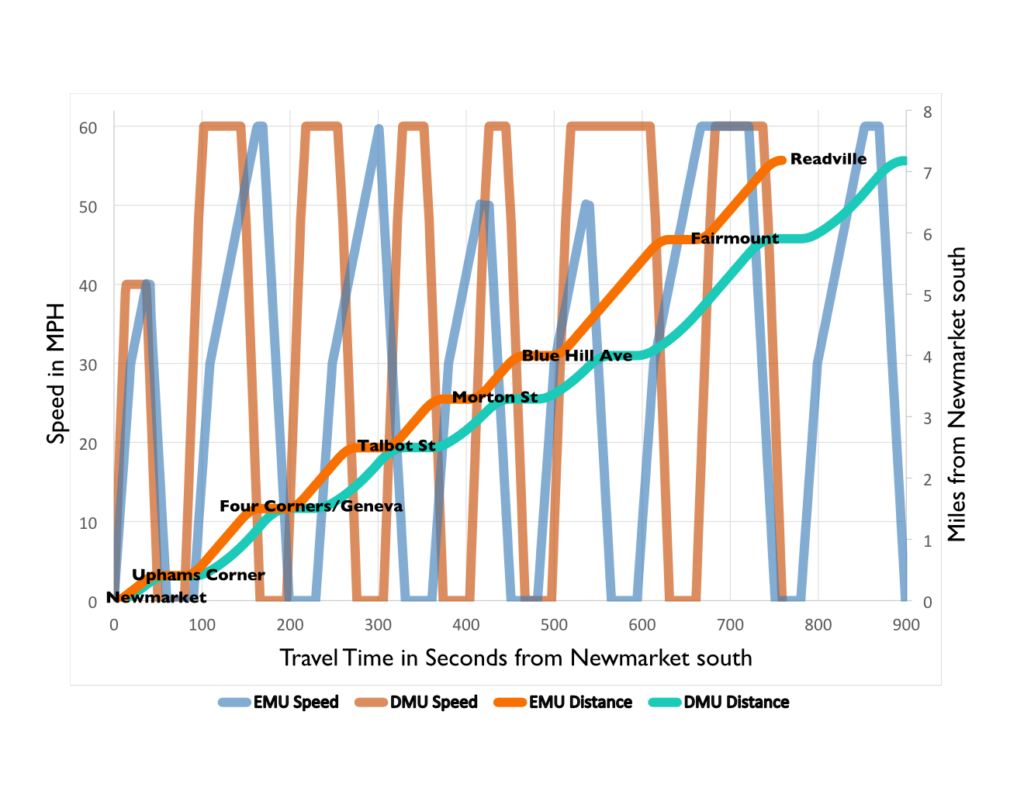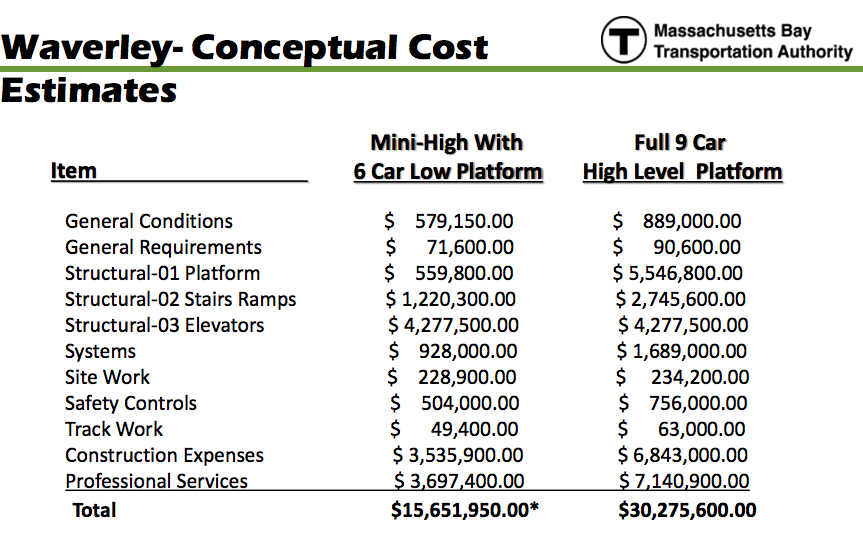Suburban park-and-ride lots are a fact of life. While rail stations near housing result in better land use and higher ridership (Windsor Gardens in Norwood, for example, has 600 riders per day with no parking. Of course, driving downtown from Windsor Gardens is a 1 to 2 hour endeavor at rush hour, on the train it’s 35 minutes.), there are some areas where sprawling populations are too dispersed for walkable stations and park-and-rides make some sense. (And, no, I’m not referring to somewhere like Ashland, Westborough or Kingston, where 1990s-era stations were built away from downtowns but next to big parking lots; despite this these stations have ridership no higher than Windsor Gardens.)
Take Littleton, for example. Its old train station is little more than a crossroads, not even the center of town, so the park-and-ride nearer routes 2 and 495 makes sense (the town itself is quite dispersed, a combination of sprawl and conservation land). The same could be said of South Acton, where the always-full parking lot combines with a small density node, although a walking-based station at West Acton would help to relieve some of the parking capacity issues at South Acton. Littleton’s parking is also at capacity, and will likely continue to increase when new schedules come in to effect this spring with 30-minute travel times to Porter Square, speeds unattainable by car without traffic, let alone on Route 2 at rush hour.
Littleton’s observed catchment extends to several nearby towns, and grassy areas adjacent to the lot are frequently used by motorists to park when the lot is full. Expansion is possible but not cheap: the MBTA-owned parcel is on a slope and construction costs would exceed the $5000 to $10000 per space typical of construction on level ground. But there is a need for more parking: the Fitchburg corridor serves a dispersed population with poor highway access to Downtown Boston, and providing parking allows many more people to use the train rather than drive downtown.
What makes Littleton somewhat different from other park-and-rides is the presence of several large nearby corporate campuses, most notably Cisco three miles to the south and IBM three miles to the north. Each campus houses more than 1000 employees, and each has abysmal non-driving access. (IBM is served by the end of the LRTA Route 15, which takes only 45 minutes to get to Lowell’s train station.) For all intents and purposes, access to either of these campuses requires a car.
Until the double track was completed to Littleton and the station there rebuilt, there were no reasonable reverse-peak transit options to get past South Acton, a longer drive from either of these campuses. But with the new schedules—and the recent promise of an even earlier train to Fitchburg—there are now hourly-or-better reverse-peak trains to Littleton, allowing city dwellers to get to Littleton’s train station without driving (even against peak traffic, getting to and from Littleton at rush hour is no picnic). Of course, this station is still miles from major employers, hence the proverbial last mile issue.
There are some possible solutions. Bicycles are allowed on reverse-commute trains, and the roads in Littleton and Boxborough are relatively bikeable (cyclists can use a closer back entrance to Cisco closed to vehicular traffic to keep cars from cutting through local neighborhoods). But cycling isn’t for everyone, especially given the narrow area roads and heavy rush hour traffic. Uber operates in the area, but the density of cars is relatively low (meaning potentially long wait times) and fares high: $7 to $10 from the train station to employer, as much as the train ticket from Boston. Corporate shuttles are another option: RedHat and Juniper run a shuttle from Alewife to their Westford campuses and the new CrossTown Connect TMA is exploring shuttle services from Littleton. But shuttles are expensive; a single route can cost $50,000 to $100,000 annually.
If only there was a parking lot full of cars sitting unused all day …
Imagine the following:
Jack lives in Boxborough and works in Boston. He leaves home at 7:30 to catch the 7:45 express train at Littleton. He arrives at the parking lot and parks in a reserved parking space at the Littleton station and takes the train to work. In the evening, he takes the 5:35 express from North Station which arrives at 6:25, gets in his car and drives home.
In the meantime, Jill, who lives in Cambridge, gets on the train at Porter at 7:53 and arrives in Littleton at 8:38. She then gets in Jack’s car—parked in that reserved space nearest to the platform—and drives 10 minutes to IBM, where she works. In the evening, she returns the car to the same spot in the station and gets on the 5:15 train back to Boston, and the car is awaiting Jack’s return.
What incentive would Jack have for letting Jill borrow his car like this? Cars aren’t cheap, gas isn’t free, and most people won’t lend their car to a stranger. But Jack can be incentivized to lend Jill his car. Littleton’s parking availability is 2%, meaning that Jack isn’t guaranteed a space, especially taking this later express train. And the cost to park is $4 per day, or $70 per month, meaning that the annual cost for Jack to park is $840. In this scenario, we can offer Jack free parking with a guaranteed space; money is nice, but the extra 10 minutes at home every morning may be worth a lot more to Jack than $840. This idea might work at park-and-rides which aren’t at capacity, but the guaranteed space is a kicker.
But with free parking, isn’t the T just subsidizing Jack and Jill’s arrangement? Not at all. If there wasn’t a vehicle available for Jill’s last-mile commute, she wouldn’t take the train, which costs her nearly $3700 per year. So the net increase in revenue for the T is nearly $3000 annually.
Jack is still letting a stranger borrow is car. But maybe Jill isn’t such a stranger after all. There is some precedent: car sharing company called RelayRides (now Turo) pioneered peer-to-peer car sharing in the past decade, although they have now relaunched based on longer rentals. FlightCar has a very similar model to the plan proposed here, except for longer periods of time at airports. Instead of paying $20 to $30 per day to park at the airport, your parking is free—and you get paid if someone rents your car. More to the point, Jill is an employee of a major corporation, not a random person getting off of a train. Jack would be assured that she wouldn’t go off joyriding during the day, but rather drive the car a few miles to the company parking lot (where, perhaps, Jill would have preferred parking). And because employee schedules are very set, it would be the same person driving Jack’s car every day, not whoever swiped their Zipcard.
Once money changes hands, car sharing does get more complicated, although this model could be used in the longer term to help further reimburse Jack for fuel and maintenance expenses beyond the parking savings. Insurance would also be an issue, and an umbrella policy would have to be set up, perhaps through a TMA or a larger organization overseeing this program if it were to grow. A safety net would need to be provided, but one already exists: both Jack and Jill could participate in an employer-based guaranteed ride home program in case Jack needed to come home early and there was no way for Jill to get to work otherwise, or if Jack called in sick and there was no car for Jill to drive to work, or if Jill stayed late at the office and Jack needed to fetch his car.
Technologically, the car could be set up in a number of ways. The easiest (and cheapest) would be to give Jill a spare key; this would work for a test project. A Zipcar-esque swipe-in system could be set up, but these cost hundreds of dollars to install, and might not be appropriate for a pilot. Installing GPS doesn’t come free, but Jack might have more peace of mind with tracking of Jill’s movements (when she’s driving his car) and even text alerts to let him know when she had returned the car to the station, so he would be assured of having a car waiting for him to get home at the end of the day.
There’s also the question of vacation schedules: if Jack goes on holiday, there is no car waiting for Jill. At those times, back-up cars could be used. Jill would have separate keys for back-up cars of other participants in the program. When Jack wasn’t working, she could use some of those cars, and those participants would also benefit from the guaranteed and free parking. (This would be even easier to set up with car sharing technology.) And since Jack and Jill would have each other’s emails, they would know vacation schedules ahead of time, so there wouldn’t be surprises. (It’s only an issue when Jack is on vacation anyway; when Jill is out of the office, Jack’s car just sits in Littleton all day.) If there were five outbound participants in this program, perhaps two back-up cars would be necessary.
In addition to cost, this program would be superior to shuttles because of the flexibility involved. Because Jack’s commute downtown from Littleton is nearly an hour each way and Jill’s commute from Littleton is only a few minutes, she has the ability to take an earlier or later train and still get in a full work day without affecting Jack’s commute. With a shuttle, it would require multiple trips at a higher cost. With shared cars, Jill could shift her schedule by an hour with no ill effect for Jack. Shuttles also lose efficiency when they have to make multiple stops at multiple employers, which are often not in a straight line (violating Jarrett Walker’s “be on the way” principle) while car sharing would allow commuters to more easily disperse to suburban job sites.
Assuming Jill switches from driving the whole way to driving and transit, and assuming 225 work days per year, she would save more than 10,000 vehicle miles traveled annually. Jack might save VMT as well; on days when the lot is full, he’d have a guaranteed parking space and wouldn’t have to drive in to work—or to a nearer park-and-ride like Alewife—when the lot was full. In addition, this sort of scheme, at a larger scale, may actually increase the utilization of the parking lot. It’s not too far-fetched to imagine one inbound commuter parking at 7:00 and a reverse-commuter leaving at 7:45 and a second inbound commuter parking at 8:30 and a second reverse-peak commuter using that car at 8:45, which doubles the efficiency of a single parking space.
With enough utilization, a shuttle would make sense: if 15 cars were being driven between Littleton and Cisco, for example, a 14-person van meeting each train would be feasible. But shuttles often suffer from a chicken-and-egg conundrum: without riders in place, there’s little incentive to invest $100,000 annually in a shuttle. Car sharing could provide a bridge to shuttle service for larger employers, and for smaller ones, provide a link for employees living in the city to work at suburban campuses.
Like park-and-rides, suburban office parks are a feature of the suburban and exurban landscape—like it or —although they are quickly losing allure (GE moving from suburban Connecticut to downtown-ish Boston is one such example). But they won’t disappear overnight. By leveraging the existing Commuter Rail network, park-and-ride infrastructure and the idle cars occupying the lots, we may be able to provide better options for commuters trying to get to these offices without trying to retrofit transit on to a landscape where it doesn’t work well. This wouldn’t be a panacea for the poor design of dispersed office parks. But it would provide transit accessibility for minimal cost.




